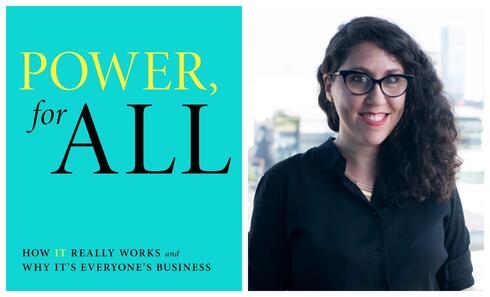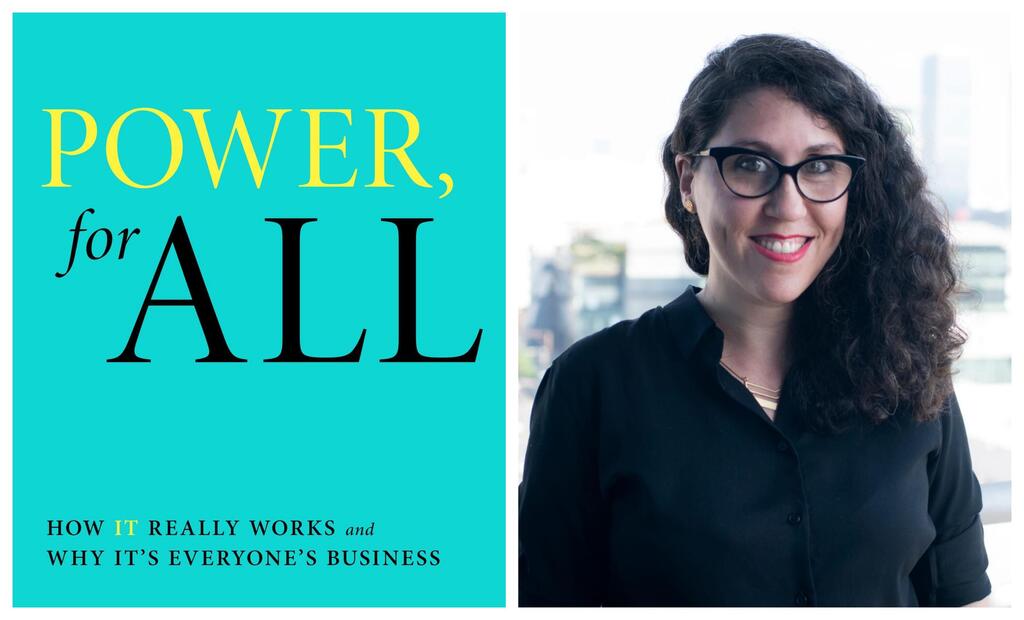
BiblioTech
CTech's Book Review: Examining an essential read for women in the workforce
Shiri Mosenzon-Erez, VP Solution Design at Fabric, shares insights after reading “Power, for All: How It Really Works and Why It's Everyone's Business” by Julie Battilana and Tiziana Casciaro
Shiri Mosenzon-Erez is the VP Solution Design at Fabric, an on-demand logistics platform. She has joined CTech to share a review of “Power, for All: How It Really Works and Why It's Everyone's Business” by Julie Battilana and Tiziana Casciaro
Title: “Power, for All: How It Really Works and Why It's Everyone's Business”
Author: Julie Battilana and Tiziana Casciaro
Format: Book
Where: Home
Summary:
The book brings to life the concept of power in its different forms, how it really works in organizations and in society at large, and how we can analyze and make good use of the power dynamics around us. Power, in the book’s definition, is essentially the ability to influence someone else’s behavior. This influence derives from having access to valued resources, and once you understand what those are, you can take action to improve life for yourself and others. The book shares strategies of agitating, innovating, and orchestrating change. It very cleverly brings together meticulous academic scholarship with relatable examples from situations relevant to our day-to-day life and to the business world.
Important Themes:
The main theme of the book is that the way in which we experience the world is not a mystery, and insights from behavioral science can be applied to everyday decision-making. The authors’ central message is that power is not just the privilege of a few, but a resource that should be democratized in order to help people of all parts of society advance their goals.
More specifically to business settings, the book’s message is that power-mapping your workplace is not a cynical exercise reserved for Machiavellian schemers - it should be a part of your orientation into a new environment and can be valuable in empowering others as well.
“Power, for All” focuses on two basic needs shared and desired by humans, namely safety and self-esteem. The book highlights the variety of resources people pursue in order to meet these needs, ranging from the obvious objects of power, money, and social status, but also less obvious ones like senses of autonomy, achievement, affiliation, and mortality. Keeping this in mind can help you manage situations and stakeholders in a way that can drive the change you are working towards in your company, be it a project, an organizational change, or even a product feature or specific strategic decision.
What I’ve Learned:
My main takeaway from this book is the realization of how much, whether consciously or subconsciously, the balance of power is present in all interactions and decisions, both at home and at work. Recognizing this, and better understanding what people’s motivations are using the book’s model for effecting change, I can do more for my team members, for those I mentor, and for every group I take part in.
Perhaps a surprising insight from a book about power, it turns out that empathy is a major source of strength, possibly the most important leadership skill. It is at the core of mapping the situational balance of power, and hence the ability to impact it. Empathy for the needs and vulnerabilities of others, understanding what resources they currently lack and how they can acquire them, is at the heart of being a good leader. The book helped me see that empathy is not a constraint on power; it is the only way to avoid being blindsided by the power one has.
This is a lesson that I think is crucial for business leadership, especially in new companies. When building organizations and teams, and when creating new roles for people (for example, in a startup), it is very important to ensure the underlying forces match the plan. This helps in deciding which person is assigned into which role, and planning how they can have the right balance of power with other roles in the organization. In this way, the organization as a whole can benefit, while individuals can feel safe and maintain the right level of self-esteem that fuels continuous and fruitful collaboration with others.
Who Should Read This Book:
True to its title, I think this book could be beneficial to all. It will be important for people, women and men alike, as they change roles or move into new organizations, and have to learn to adapt to new power dynamics.
With Women’s Day, it may seem obvious for me to say that this is essential reading for women in the workplace, who are often viewed as lacking power. But I actually think that men in positions of power should be the first to read this book, which will nudge them to think critically about the organizations they lead and how they perceive social situations. This book can really help business leaders see what they can do to ensure that they and their organization take every opportunity to empower all employees, from the entry-level to senior management, not least those who are traditionally “lacking” power.














